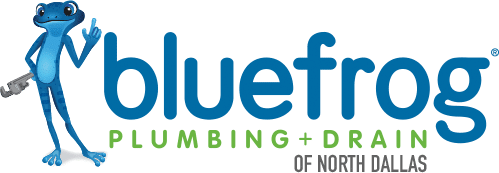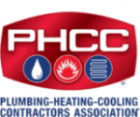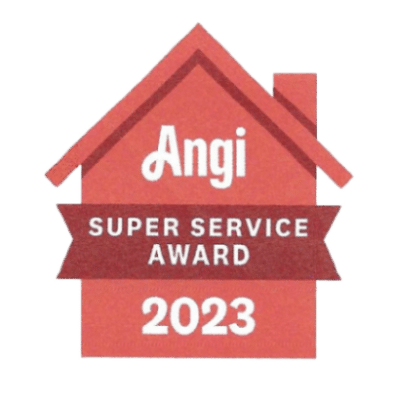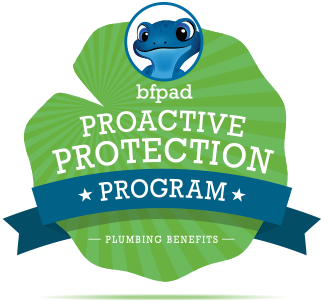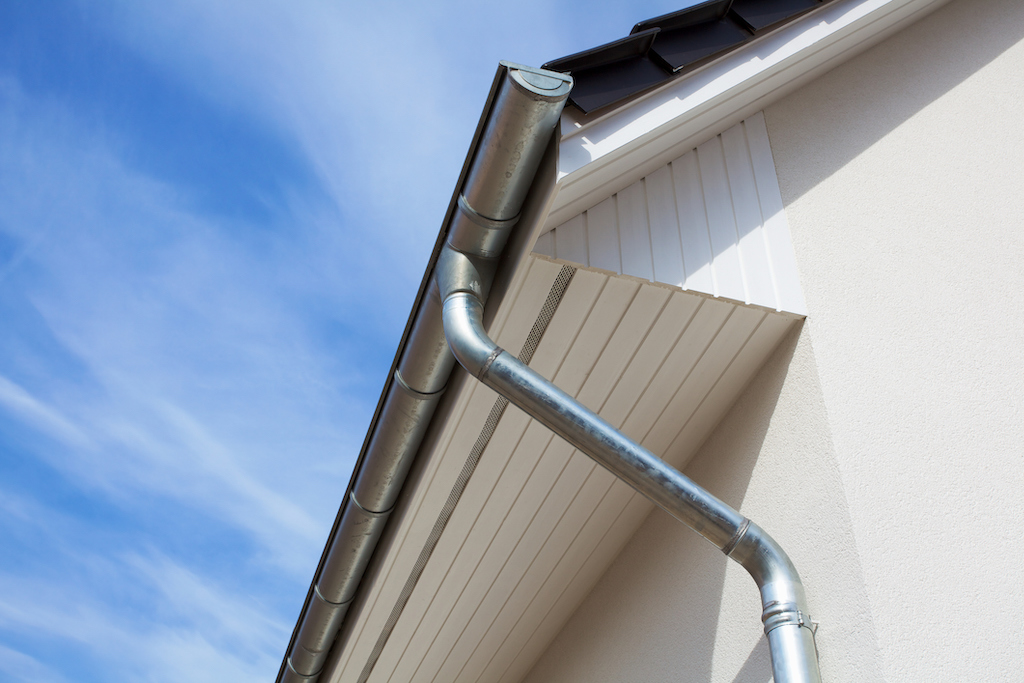
Effortless Roof Drain Solutions: Protect Your Home Today
Have you ever wondered why roof drains are crucial for your home’s well-being? Especially as a homeowner, understanding the ins and outs of your property’s drainage system can save you from a lot of headaches down the line.
Roof drains play a pivotal role in protecting your home from water damage, but their importance is often overlooked until problems arise.
In this article, we’ll dive deep into the world of roof drains. You’ll learn what they are, why they’re essential, and how to ensure they’re working correctly to protect your home.
From the basics of roof drainage to advanced maintenance tips, we’ve got you covered. Whether you’re dealing with an existing system or planning a new installation, this guide will provide you with all the information you need to make informed decisions about roof drains.
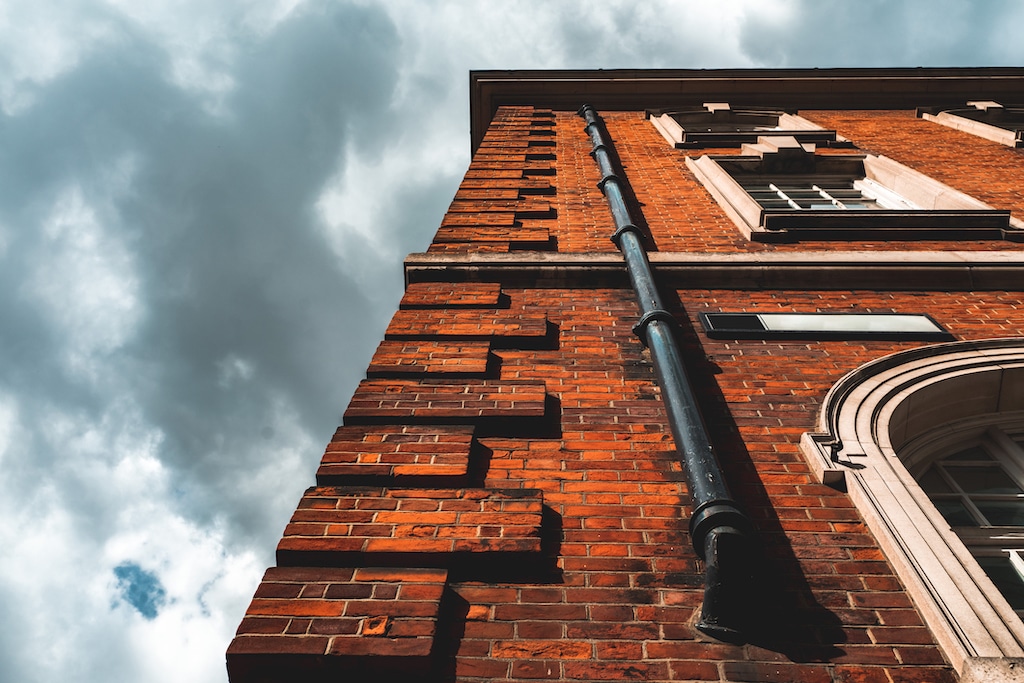
Photo By CHUNYIP WONG at iStock
What is a Roof Drain?
Roof drains are integral components of a building’s roofing system, designed to remove excess water from the roof.
By channeling water away, they prevent water accumulation that can lead to roof damage, leaks, and structural issues. These drains are particularly crucial in regions that experience heavy rainfall or snow, where the potential for water to pool on flat or low-slope roofs is high.
Without a proper drainage system, standing water can significantly increase the weight on the roof structure, posing a risk of collapse.
Additionally, water that remains on the roof for extended periods can seep into the building, causing damage to walls, ceilings, and insulation, and can promote the growth of mold and mildew.
Roof drains come in various designs, including inner drains that connect to pipes running through the building, scuppers that allow water to exit off the roof edges, and downspouts that direct water to the ground. Each type is suited to different architectural styles and roofing materials, ensuring that water is efficiently removed from the roof, thereby protecting the building’s integrity and the safety of its occupants.
A Detailed Explanation of Roof Drains
Roof drains are designed to remove water from your roof, preventing damage to your structure and foundation. They are especially crucial in areas that experience heavy rainfall or snow.
Without proper drainage, water can accumulate on your roof, leading to leaks, structural damage, and a host of other issues.
The Role of the Roof Drain
At the heart of protecting your home from water damage is the roof drain.
This crucial component serves as the first line of defense against the elements, ensuring that rainwater and melting snow find a quick exit off your roof, rather than pooling and causing potential damage.
The effectiveness of a roof duct system lies in its ability to swiftly channel water away from the building, thereby safeguarding the structural integrity of your home.
The primary function of the roof duct is to collect and redirect water off the roof and away from the property. This is particularly important in areas prone to heavy rainfall or snow, where water accumulation can lead to significant issues such as leaks, mold growth, and even structural failure.
By efficiently managing water runoff, roof ducts play a pivotal role in extending the lifespan of your roof and maintaining the overall health of your home.
Components of a roof duct system
A typical roof duct system consists of several key components, each playing a vital role in water management. The drain opening, usually located at strategic points on the roof, is where water enters the system.
To prevent leaves, twigs, and other debris from clogging the drain, a strainer is placed over the opening. This simple yet effective mechanism ensures that only water enters the roof duct pipe, minimizing maintenance and preventing potential blockages.
From the drain opening, water is directed into the roof duct pipe, a network of piping designed to carry water away from the building. The complexity and layout of this piping system can vary greatly depending on the size and design of the roof, as well as the specific requirements of the building’s architecture.
In some cases, additional components such as siphons or check valves may be incorporated to enhance the system’s efficiency, especially in areas with heavy rainfall or specific architectural challenges.
Design Considerations
The design and complexity of a roof duct system are influenced by several factors, including the size of the roof, the climate, and the building’s architecture.
For large or complex roofs, multiple roof drains may be necessary to effectively manage water runoff. The placement of these drains is critical and requires careful planning to ensure that water is efficiently removed from all areas of the roof.
Climate plays a significant role in the design of a roof duct system. In regions with heavy rainfall or snow, systems must be capable of handling large volumes of water. This may involve larger drain openings, wider piping, and the inclusion of additional drainage features to prevent overflow and water damage.
Architectural considerations also impact the design of a roof duct system. The slope of the roof, the type of roofing material, and the overall style of the building can all influence how water is managed.
For example, flat roofs may require a more complex drainage system to prevent water pooling, while sloped roofs may utilize gravity to aid in water removal.
Signs of a Problem in Your roof duct system
Water Pooling on the Roof
One of the most obvious signs that there’s an issue with your roof duct system is the presence of water pooling on the roof. This condition indicates that the water is not being efficiently channeled away by the roof duct.
Standing water on the roof can lead to several problems, including increased weight load that can compromise the structural integrity of the roof, accelerated wear and tear on roofing materials, and the potential for leaks to develop.
If you notice water pooling, it’s crucial to inspect the roof duct system for clogs or damage that might be impeding water flow.
Overflowing or Leaking Gutters
Another clear indicator of problems with your roof duct system is when gutters begin to overflow or leak.
This can happen when the roof duct pipe is blocked, preventing water from flowing through the system as designed. Overflowing gutters can lead to water spilling over the sides of the building, which can cause damage to the exterior walls, foundation, and landscaping.
Leaking gutters, on the other hand, may suggest cracks or gaps in the gutter system, often resulting from clogs that put pressure on the gutters.
Visible Damage to the Drainage System
Visible damage to components of the roof duct system, such as cracked pipes, broken strainers, or detached gutters, is a clear sign that repairs or replacements are needed.
Physical damage can compromise the system’s ability to effectively manage roof runoff, leading to potential water damage to the building. Regular inspections can help identify and address these issues early, preventing minor problems from escalating into major concerns.
Clogs and Blockages
Clogs and blockages in the roof ducts are common problems that can severely impact the efficiency of your drainage system.
Leaves, twigs, and other debris can accumulate over time, especially if the roof is located near trees. These blockages can restrict water flow, leading to backups and overflow. Implementing regular cleaning and maintenance routines is essential to keep the drainage system clear and functional.
Unusual Noises from the Drainage System
Unusual noises, such as gurgling or water backing up, can indicate that there’s a problem within the roof duct system. These sounds may suggest that air is trapped in the pipes due to partial blockages or that water is struggling to flow through the system efficiently.
Listening for these signs can help homeowners identify issues early, allowing for prompt intervention before more significant damage occurs.
Identifying and addressing problems with your roof duct system promptly can save you from costly repairs and extensive water damage to your home.
Regular maintenance, including cleaning and inspections, is key to ensuring that your roof ducts are functioning correctly. If you encounter any of the signs mentioned above, it’s advisable to consult with a professional to assess the situation and recommend the appropriate corrective actions.
Also read: The Ultimate Guide To Hiring A Bathroom Plumber: Everything You Need To Know
The Significance of Roof Drain Maintenance
Ensuring Longevity and Performance
Regular maintenance of your roof duct system is not just a recommendation; it’s a necessity for the longevity and optimal performance of your roofing system.
Over time, roof ducts can become clogged with leaves, debris, and even nesting materials from birds or small animals. These blockages can lead to water pooling on the roof, which, if left unchecked, can cause significant damage to the roofing material, underlying structures, and even the interior of your home.
By ensuring that your roof duct system is regularly cleaned and inspected, you can prevent these issues, extending the life of your roof and maintaining the overall health of your home.
Preventing Water Damage
One of the primary roles of a roof duct system is to channel water away from your home, protecting it from water damage.
When roof duct pipes are clogged or damaged, water can back up and seep under roofing materials, leading to leaks, mold, and structural damage. Regular maintenance helps to ensure that water is efficiently removed from your roof, safeguarding your home from the costly and often extensive repairs that water damage can necessitate.
Cost Savings
Investing in regular maintenance for your roof duct system can lead to significant cost savings over time.
By identifying and addressing minor issues before they escalate into major problems, you can avoid the expense of extensive repairs or even a complete replacement of your roof duct system.
Additionally, a well-maintained roof duct system can improve the overall efficiency of your home’s drainage system, potentially reducing the risk of foundation damage and landscaping issues caused by improper water runoff.
Enhancing Safety
A blocked or malfunctioning roof duct system can create safety hazards for both the occupants of a home and the structure itself.
Water pooling on the roof can lead to ice formation in colder climates, increasing the risk of slips and falls. Additionally, the added weight of standing water or ice can compromise the structural integrity of the roof, posing a risk of collapse.
Regular maintenance ensures that your roof duct system is functioning correctly, minimizing these safety hazards.
Environmental Impact
Proper maintenance of your roof duct system also has environmental benefits. By ensuring that water is efficiently channeled away from your home and into the appropriate drainage systems, you can prevent erosion and reduce the impact on local waterways.
Well-maintained roof ducts and roof duct pipes help to minimize the risk of overflow and contamination, contributing to the health of your local ecosystem.
The significance of roof duct maintenance cannot be overstated. Regular checks and cleaning of your roof ducts not only protect your home from potential damage but also save money, enhance safety, and have a positive environmental impact.
Homeowners should prioritize this maintenance to ensure the longevity and efficiency of their roof duct system.
Also read: Elevate Your Space: Comprehensive Guide To Bathroom Sink Replacement
How to Choose the Right Roof Duct
Assessing Roof Size and Drainage Capacity
The size of your roof is a pivotal factor in determining the type and number of roof drains needed.
Just like selecting an expansion tank based on system volume and pressure requirements, choosing roof drains requires a calculation of the roof area and an understanding of the maximum volume of water it can collect during heavy rainfall.
Larger roofs or those with complex designs often necessitate multiple drains to manage water runoff efficiently. This approach prevents water accumulation, which can lead to structural damage or leaks.
The drainage capacity must be aligned with the roof’s size to ensure that even during intense storms, the system can handle the water without overflowing.
Understanding the Impact of Roof Slope
The slope of your roof significantly influences the drainage system’s design. Steeper slopes facilitate quicker water flow to the drains, necessitating a system that can handle rapid water movement.
In contrast, flat roofs require careful planning to prevent water pooling, incorporating slight inclines towards drain points or more sophisticated drainage solutions. Selecting a roof duct system that accommodates your roof’s slope is crucial for ensuring efficient water evacuation.
This consideration is akin to choosing an expansion tank with the correct pressure rating to maintain system efficiency.
Considering Local Rainfall Patterns
Local climate and rainfall patterns play a critical role in selecting your roof duct system. Areas with frequent heavy downpours demand a robust system designed to prevent overflow and subsequent water damage.
This factor is similar to adjusting an expansion tank’s size and settings based on water usage patterns, ensuring the system’s capacity aligns with environmental demands.
Understanding local weather trends helps in choosing a roof duct system capable of handling the typical rainfall your area experiences, ensuring your home remains protected in all weather conditions.
Matching Materials and Design to Roofing Requirements
The compatibility of roof duct materials and design with your roofing system is essential for ensuring effective drainage and longevity of your roof.
Different roofing materials, whether metal, asphalt shingle, or rubber membrane, may require specific types of roof ducts and roof duct pipes to optimize water flow and prevent damage.
This selection process mirrors the importance of choosing an expansion tank that suits the heating system and water quality, emphasizing the need for material compatibility to enhance durability and performance.
Integration with Existing Plumbing and Drainage Systems
Integrating the selected roof drain with your home’s existing plumbing and drainage infrastructure is crucial for seamless water removal.
The roof drain pipes should connect efficiently with downspouts, gutters, and the ground drainage system, ensuring that water is directed away from the property effectively.
This integration is akin to ensuring an expansion tank is properly incorporated into a home’s water heating system, highlighting the importance of compatibility and seamless operation within the existing setup.
Selecting the right roof drain involves a thorough evaluation of these factors, ensuring that the system matches the architectural and environmental requirements of your home. This careful consideration is key to maintaining the structural integrity of your home and preventing water damage, akin to the detailed selection process for an expansion tank in a water heating system.

Photo By Derevo30 at iStock
Types of Roof Drains For Your Home
Inner Roof Drains
Inner roof drains are designed to be installed within the structure of a building, making them an ideal choice for large commercial buildings or areas where exterior drainage is not feasible. These systems typically consist of a drain bowl situated in the center of a roof area, connected to a network of roof duct pipes that run beneath the roof and inside the building’s walls to carry water away.
The main advantage of inner roof drains is their ability to provide efficient drainage without affecting the building’s exterior appearance.
However, they require careful installation and regular maintenance to prevent blockages within the internal piping system. Additionally, inner roof drains are equipped with a water trap to prevent odors and gasses from entering the building through the drainage system.
Scupper Drains
Scupper drains offer a solution for flat or slightly sloped roofs, where they are installed along the roof edges to channel water directly off the side of the building.
These roof drains are particularly effective in areas that experience heavy rainfall, as they can handle large volumes of water quickly.
Scupper drains can be integrated into the building’s design, often featuring decorative elements that enhance the structure’s aesthetic.
One key consideration when opting for scupper drains is ensuring that the water is directed away from the building’s foundation to prevent erosion or water damage.
Gutter Systems
Gutter systems are among the most common types of roof drains used in residential buildings.
They collect water from the roof edge and direct it into downspouts, which then discharge the water away from the building’s foundation.
Gutter systems are versatile and can be adapted to various roof sizes and shapes. They are also available in a range of materials, including aluminum, vinyl, and copper, allowing for customization based on aesthetic preferences and budget.
Regular cleaning and maintenance are crucial for gutter systems to prevent clogs from leaves and debris, which can cause water to back up and potentially damage the roof or building structure.
Siphonic Roof Drains
Siphonic roof drains use a unique design to create a siphon effect, allowing them to drain water from the roof more quickly and efficiently than traditional gravity-fed systems.
This type of roof duct is particularly useful for large roof areas where rapid water removal is necessary.
Siphonic systems require fewer roof duct pipes and downspouts, reducing installation costs and the impact on the building’s exterior.
However, they must be precisely engineered and installed to ensure the siphon effect is achieved and maintained, necessitating expertise in siphonic drainage design.
Green Roof Drains
Green roof ducts are specialized systems designed for roofs that support vegetation. These roof ducts not only manage water runoff but also contribute to the roof’s insulation and aid in the growth of plants by retaining a certain amount of water.
Green roof drains typically include layers of soil, a drainage layer, and a water retention layer, along with the actual drain to remove excess water. They represent an environmentally friendly option, helping to reduce urban heat islands and improve air quality.
However, green roof ducts require careful planning and maintenance to ensure the health of the vegetation and the effectiveness of the drainage system.
Each type of roof duct offers unique benefits and considerations, making it important to choose the right system based on the specific needs of the building and its environment.
Whether it’s for a commercial building, a residential home, or a specialized green roof, selecting the appropriate roof duct system is crucial for effective water management and the long-term protection of the structure.
Installation Tips for Roof Drains
Planning and Design
Before installing any roof duct system, careful planning and design are crucial. This initial step involves assessing the roof’s size, shape, and slope to determine the optimal placement and number of drains required.
For effective water management, it’s essential to calculate the expected volume of water that will need to be diverted during heavy rainfall. Utilizing the correct roof drains and roof drain pipes that match the building’s architectural specifications is key.
This phase may involve consulting with professionals to ensure that the design meets local building codes and regulations, which often dictate specific requirements for drainage systems.
Choosing the Right Roof Drain
Selecting the appropriate type of roof drain is a critical decision that impacts the efficiency and effectiveness of the entire system.
Factors to consider include the roof’s material, the climate, and the aesthetic preferences of the property owner.
For instance, inner roof ducts might be preferable for commercial buildings with flat roofs, while homes with sloped roofs might benefit more from gutter systems. Additionally, the choice of material for the roof duct pipe should take into account durability and compatibility with the existing plumbing system.
Installation Process
The actual installation of roof ducts requires precision and attention to detail. Key steps include cutting openings in the roof at predetermined locations, installing the drain body and strainer, and connecting the roof drain pipe.
It’s crucial to ensure that all components are securely fastened and sealed to prevent leaks. For systems like siphonic roof ducts, adherence to specific design parameters is essential for the system to function correctly.
Safety measures should be a top priority during installation, with proper equipment and protocols in place to prevent accidents.
Integration with Plumbing and Drainage Systems
A critical aspect of installing roof ducts is ensuring seamless integration with the building’s existing plumbing and drainage infrastructure.
This involves connecting roof drain pipes to downspouts or underground drainage systems in a way that promotes efficient water flow away from the building.
Proper slope and alignment of the pipes are necessary to prevent water from pooling or backing up. In some cases, modifications to the existing plumbing may be required to accommodate the new drainage system, necessitating the expertise of a professional plumber or drainage specialist.
Testing and Inspection
After installation, testing the roof duct system is essential to verify its functionality. This typically involves simulating rainfall through water testing and checking for leaks or blockages.
Inspection of the entire system by a qualified professional can ensure that all components are correctly installed and functioning as intended. Regular inspections and maintenance are recommended to keep the system in optimal condition, addressing any issues promptly to prevent water damage.
By following these installation tips for roof ducts, property owners can ensure that their buildings are protected from water damage, extending the lifespan of the roof and maintaining the structural integrity of the property.
Proper planning, selection, installation, and maintenance of roof duct pipes are key to achieving a reliable and efficient roof drainage system.
Common Problems and Solutions
Clogged Roof Drains
One of the most frequent issues with roof drains is clogging.
Leaves, debris, and even small animals can block the flow of water, causing backups and potential water damage. The solution involves regular cleaning and maintenance of the roof duct pipes. Installing guards or strainers can also prevent debris from entering the system.
For more severe clogs, professional cleaning may be necessary to remove the blockage and restore proper drainage.
Leaky Roof Drain Pipes
Leaks in roof duct pipes can lead to water damage within the structure of a building, affecting its integrity. These leaks often result from cracks, holes, or loose connections in the piping.
The solution starts with a thorough inspection to identify the source of the leak. Once identified, the damaged section of the pipe may need to be repaired or replaced. Using high-quality materials and ensuring proper installation can prevent future leaks.
Inadequate Drainage Capacity
Sometimes, the installed roof duct system may not have the capacity to handle heavy rainfall, leading to overflow and potential water damage. This problem often arises from underestimating the volume of water or changes in the local climate.
Increasing the number of roof ducts, upgrading to larger roof duct pipes, or incorporating additional drainage solutions like scuppers or gutters can enhance the system’s capacity to manage water flow.
Improper Installation
Improper installation of roof ducts can cause a myriad of problems, including poor water flow, leaks, and even structural damage.
Ensuring that the installation is carried out by experienced professionals is crucial. It’s also important to follow manufacturer guidelines and building codes closely. If problems arise due to incorrect installation, a comprehensive assessment by a qualified professional can identify the necessary corrections to ensure the system functions correctly.
Freezing and Ice Damming
In colder climates, roof duct pipes can freeze, blocking the flow of water and leading to ice damming. This can cause water to back up and leak into the building.
Solutions include installing heating elements within the drainage system to prevent freezing and ensuring proper insulation of the roof and drainage system. Regular inspections during colder months can also help identify potential issues before they lead to significant damage.
Addressing these common problems with roof ducts requires a proactive approach to maintenance and repair.
Regular inspections, cleaning, and the use of quality materials during installation can prevent many issues. When problems do arise, prompt action and, if necessary, professional assistance can ensure that your roof duct system remains effective in protecting your property from water damage.
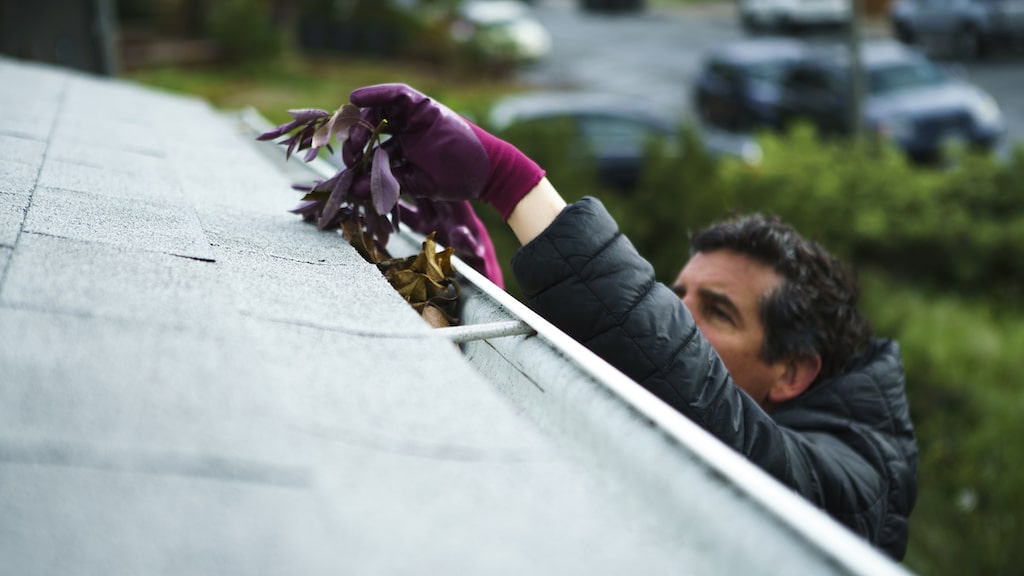
Photo By AscentXmedia at iStock
DIY Maintenance Tips
Regular Cleaning of Roof Drains
One of the most effective ways to maintain your roof duct system is through regular cleaning.
Debris such as leaves, twigs, and dirt can accumulate in the drain, leading to clogs that prevent water from flowing freely. At least twice a year, preferably in the spring and fall, remove any visible debris from the top of the drain. Use gloves and a small scoop or garden trowel for this task.
For roof ducts with strainers, remove the strainer and clear away any accumulated debris. This simple step can significantly reduce the risk of blockages and water damage.
Inspecting Roof Drain Pipes for Damage
Periodically inspect your roof drain pipes for signs of damage, such as cracks, leaks, or loose connections. This inspection can be done visually; however, for higher or hard-to-reach areas, consider using binoculars or hiring a professional.
If you discover minor damage, such as small cracks or leaks, use a waterproof sealant designed for outdoor use to repair them. For more significant damage, replacing the affected section of the pipe might be necessary.
Regular inspections can help catch issues early, preventing more extensive and costly repairs down the line.
Ensuring Proper Water Flow
To ensure that your roof duct system is effectively directing water away from your property, periodically check the flow of water during rainfall.
Observe how quickly water is draining and whether there is any overflow or pooling on the roof. If you notice slow drainage or water spilling over the sides of the gutter, there may be a blockage or the system may be inadequately sized for your roof.
In some cases, adjusting the slope of the gutters or adding additional roof ducts may improve water flow.
Winterizing Roof Drains
In areas prone to freezing temperatures, it’s important to winterize your roof duct system to prevent ice dams and blockages.
Before the onset of winter, clear all debris from the roof ducts and roof pipes.
Consider installing heating cables in gutters and downspouts to prevent freezing. Additionally, ensure that your attic is well-insulated and ventilated to minimize the risk of ice dams forming on the roof edge.
Checking for Vegetation Growth
Vegetation, such as moss or small plants, can grow in and around roof pipes, especially if there is standing water or excessive moisture.
Regularly check for and remove any vegetation. This not only prevents blockages but also reduces the risk of damage to the roofing material and drainage system. A mixture of water and mild bleach can help remove moss, but be sure to rinse the area thoroughly afterward to prevent bleach runoff.
Each of these DIY maintenance tips for roof drains emphasizes the importance of regular care and vigilance to ensure the system remains effective in managing water on the roof.
Just as maintenance is critical for the longevity and efficiency of an expansion tank for a water heater, taking proactive steps to clean, inspect, and prepare roof duct for different weather conditions can prevent issues that might lead to damage or the need for costly repairs.
Types of Flat Roof Drainage Solutions
1. Internal Drains
Internal drains are positioned strategically across the flat roof, usually near its center where water tends to collect. This system involves several drains connected to an unseen network of pipes or gutters beneath the roof’s surface, which routes the water away from the building.
Each drain is typically protected by a screen or strainer to prevent debris from entering the system.
The advantage of internal drains is their aesthetic appeal, as most of the system remains hidden under the roof’s surface, not disrupting the building’s visual appeal.
2. Scuppers
Scuppers are openings in the sidewall of a structure at the same level as the flat roof’s surface, allowing water to drain off the side.
This method requires a parapet or perimeter wall around the roof, with the roof sloping gently towards the scuppers.
Scuppers are one of the simplest and oldest methods for preventing water buildup on flat roofs. They are particularly effective when combined with a proper slope and drainage design.
3. Gutters
Gutters are used on flat roofs that have a slight pitch, allowing for water runoff to be caught and directed away from the property.
This system is most common on smaller flat roofs or in conjunction with scuppers to handle water runoff efficiently.
Gutters are a familiar sight on many buildings and work well to prevent water damage by ensuring that water is quickly removed from the roof surface.
4. Siphonic Drainage Systems
Siphonic drainage systems are often found in commercial buildings and use a gravity-induced vacuum to remove water at high speeds without the need for electrical pumps.
These systems are capable of handling large volumes of water, making them ideal for large roofs that experience frequent heavy rain.
The efficiency of siphonic systems in quickly drawing water away from the roof surface helps prevent water accumulation and potential damage.
5. Tapered Insulation
Tapered insulation involves installing panels that introduce a slope to the flat roof, directing water towards drainage points.
This method not only helps with water drainage but also adds an extra layer of protection to the roof’s surface and improves the building’s energy efficiency.
Tapered insulation is a common solution for commercial flat roofs, often used in combination with other drainage systems to address areas of water pooling effectively.
bluefrog Plumbing + Drain North Dallas and Roof Drain Solutions
bluefrog Plumbing + Drain North Dallas offers specialized services that can significantly enhance the functionality and longevity of your roof duct system.
With expertise in plumbing and drainage solutions, bluefrog Plumbing + Drain is well-equipped to address common issues associated with roof drains, such as clogs, blockages, and leaks.
Whether you’re in Denton, Irving, Carrollton, or Richardson, TX, their team of professionals can provide the necessary maintenance, repairs, or installations to ensure your roof duct system operates efficiently.
By choosing bluefrog Plumbing + Drain, you’re opting for quality service backed by years of experience in managing complex drainage systems. Don’t let roof drain issues compromise the integrity of your building.
Contact bluefrog Plumbing + Drain North Dallas today at 469-573-2535 or visit theGoogle page to see reviews and ratings.

Photo By nabihariahi at iStock
FAQs
- How often should roof drains be cleaned?
Regular cleaning schedules can vary, but it’s generally recommended to clean your roof drains at least twice a year, in the spring and fall.
- Can I install a roof duct system myself?
While some aspects of roof drain installation can be a DIY project, it’s crucial to have a professional assess your specific needs and ensure proper installation for optimal performance.
- What are the signs that my roof drain is not working correctly?
Signs include water pooling on the roof, visible damage to the drain system, and water leakage inside the building.
- How do roof drains prevent water damage?
By efficiently channeling water off the roof and away from the building, roof drains prevent accumulation that can lead to leaks and structural damage.
- What should I do if my roof drain is blocked?
Remove visible debris and flush the system with water. For persistent blockages, contact a professional service to ensure thorough cleaning and inspection.
Have you experienced issues with your roof duct system?
Share your stories and questions in the comments below, and let’s discuss the best ways to maintain and protect your home from water damage.
Read our previous blog post.
Check out this tip!
Alan Soukup

